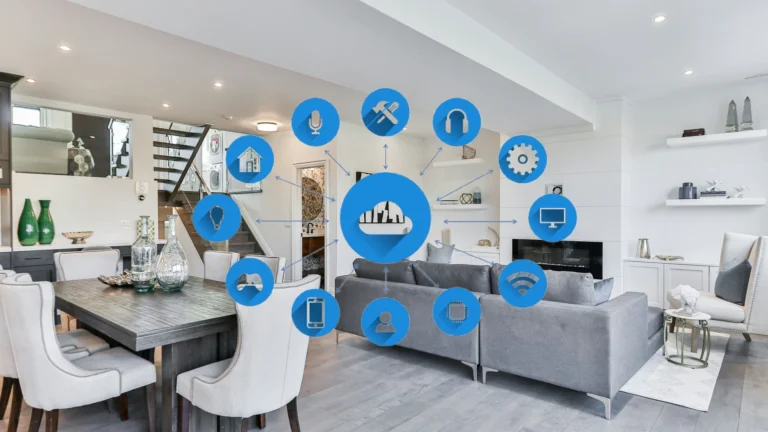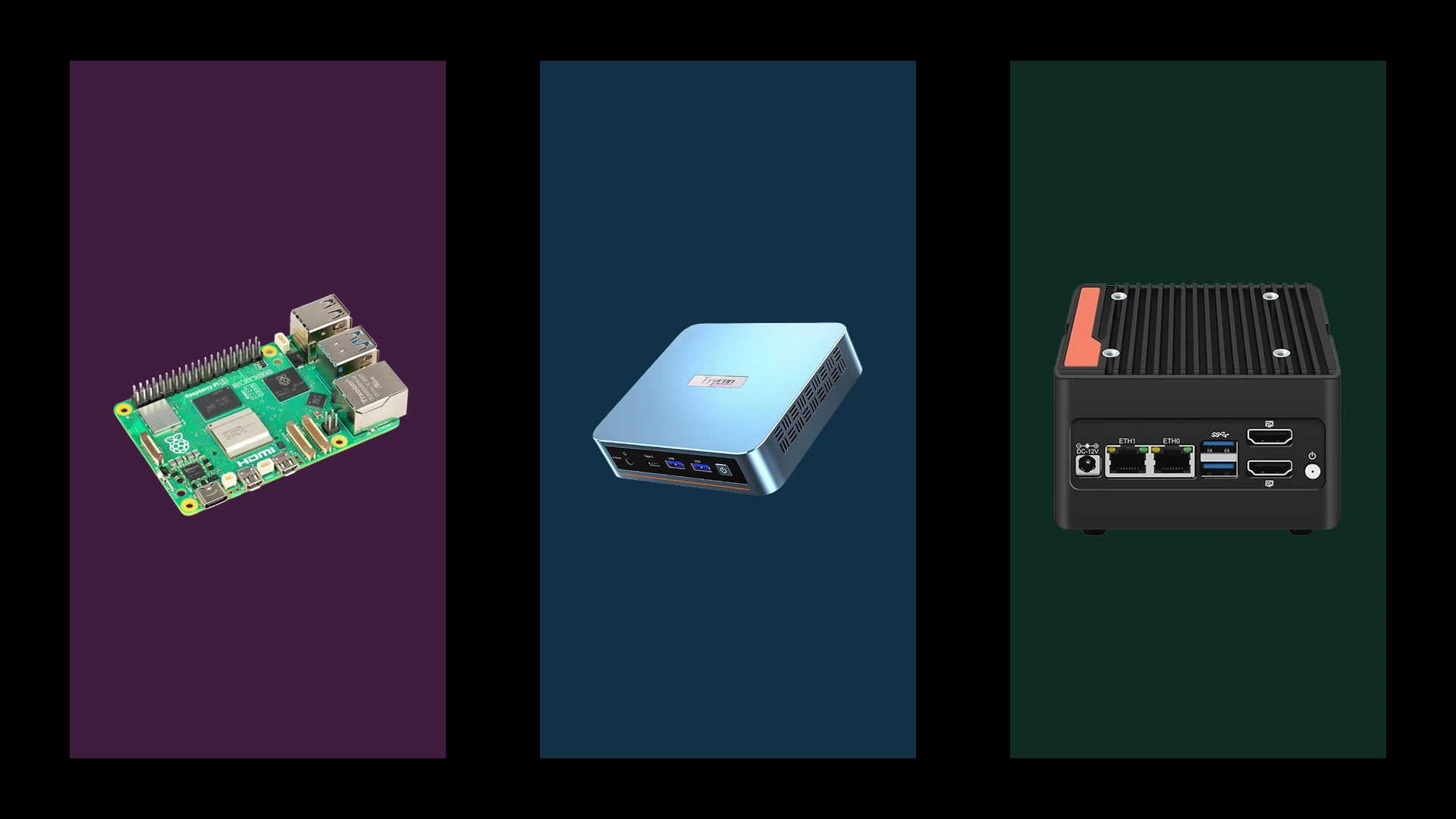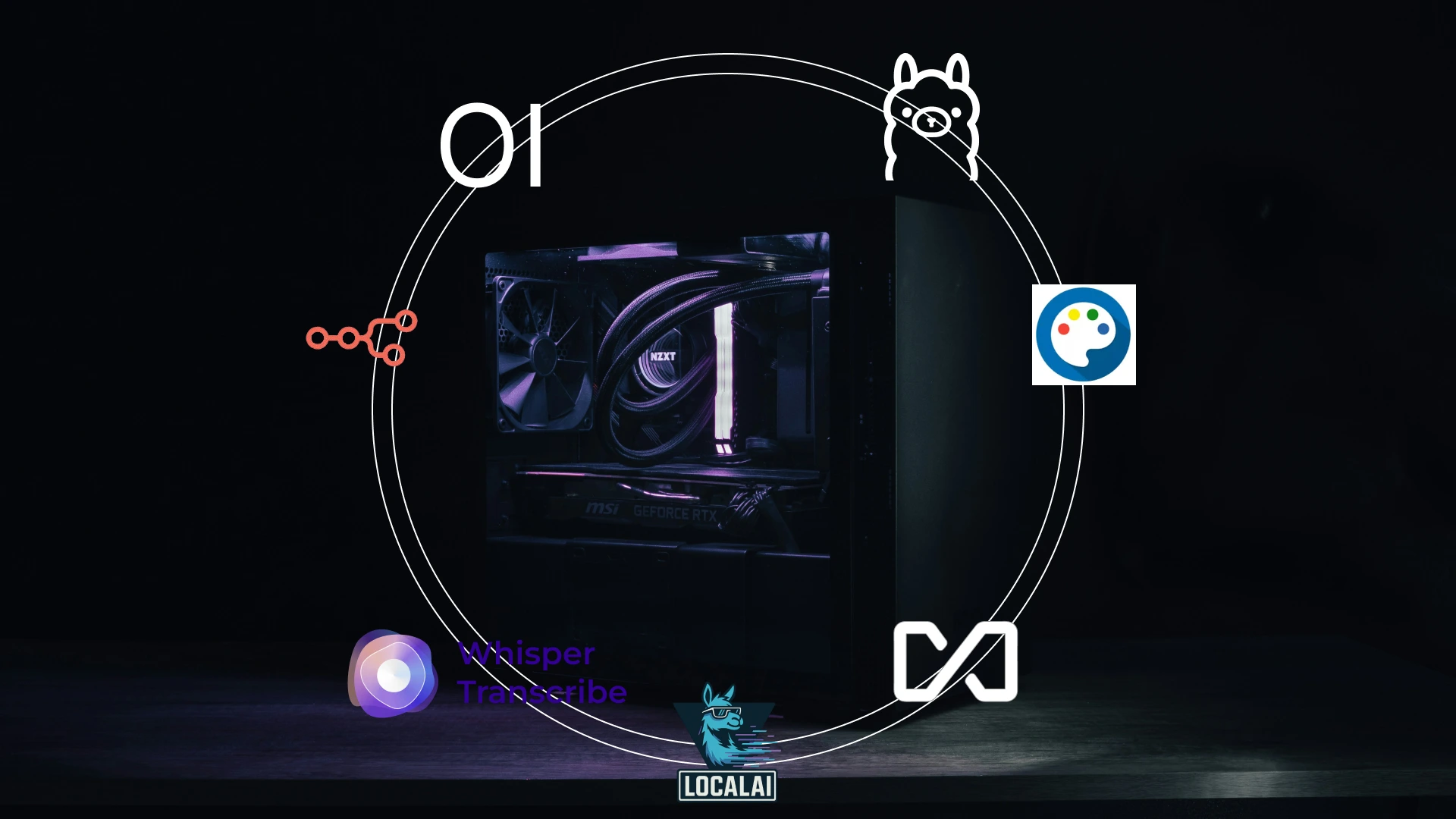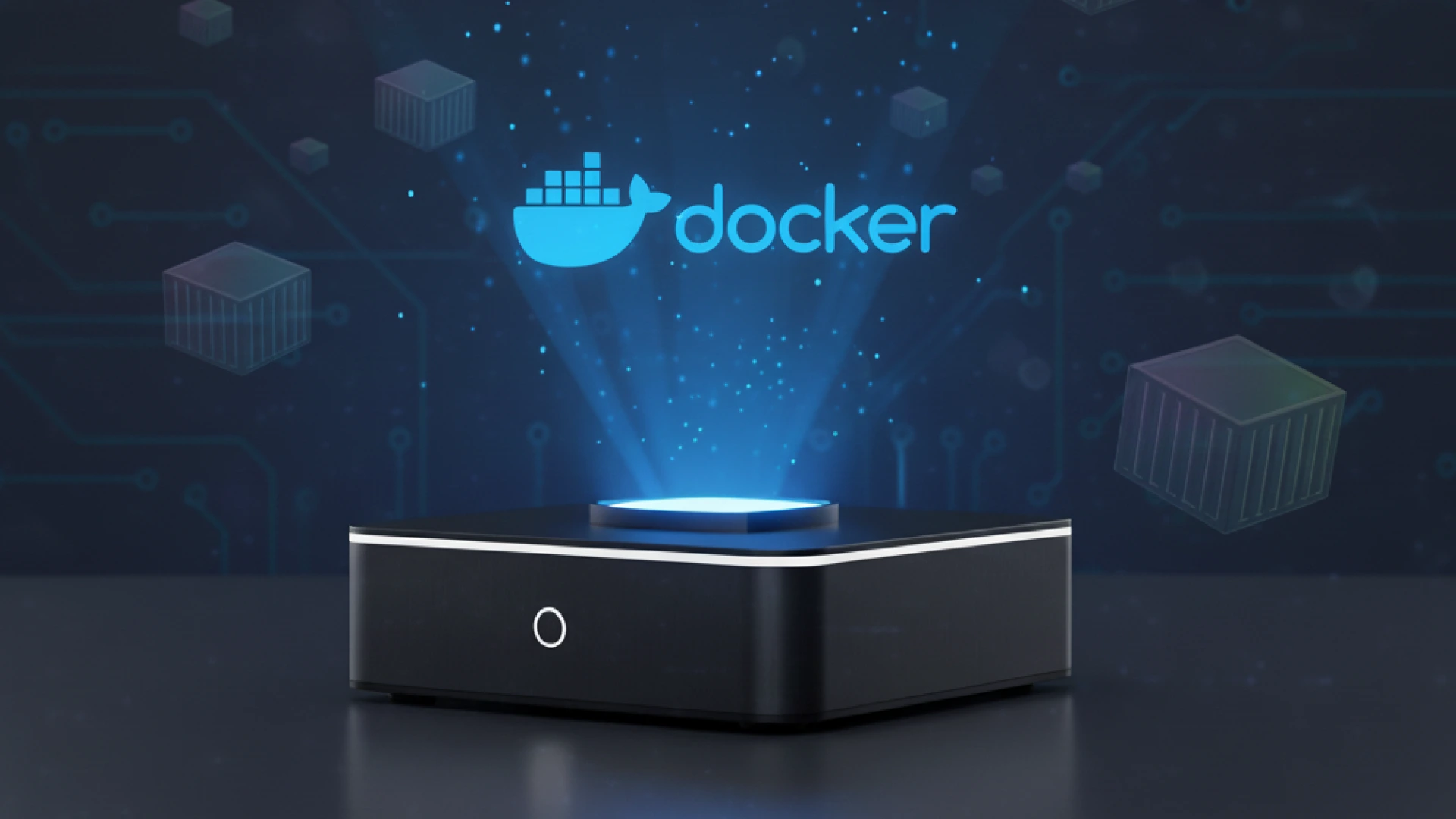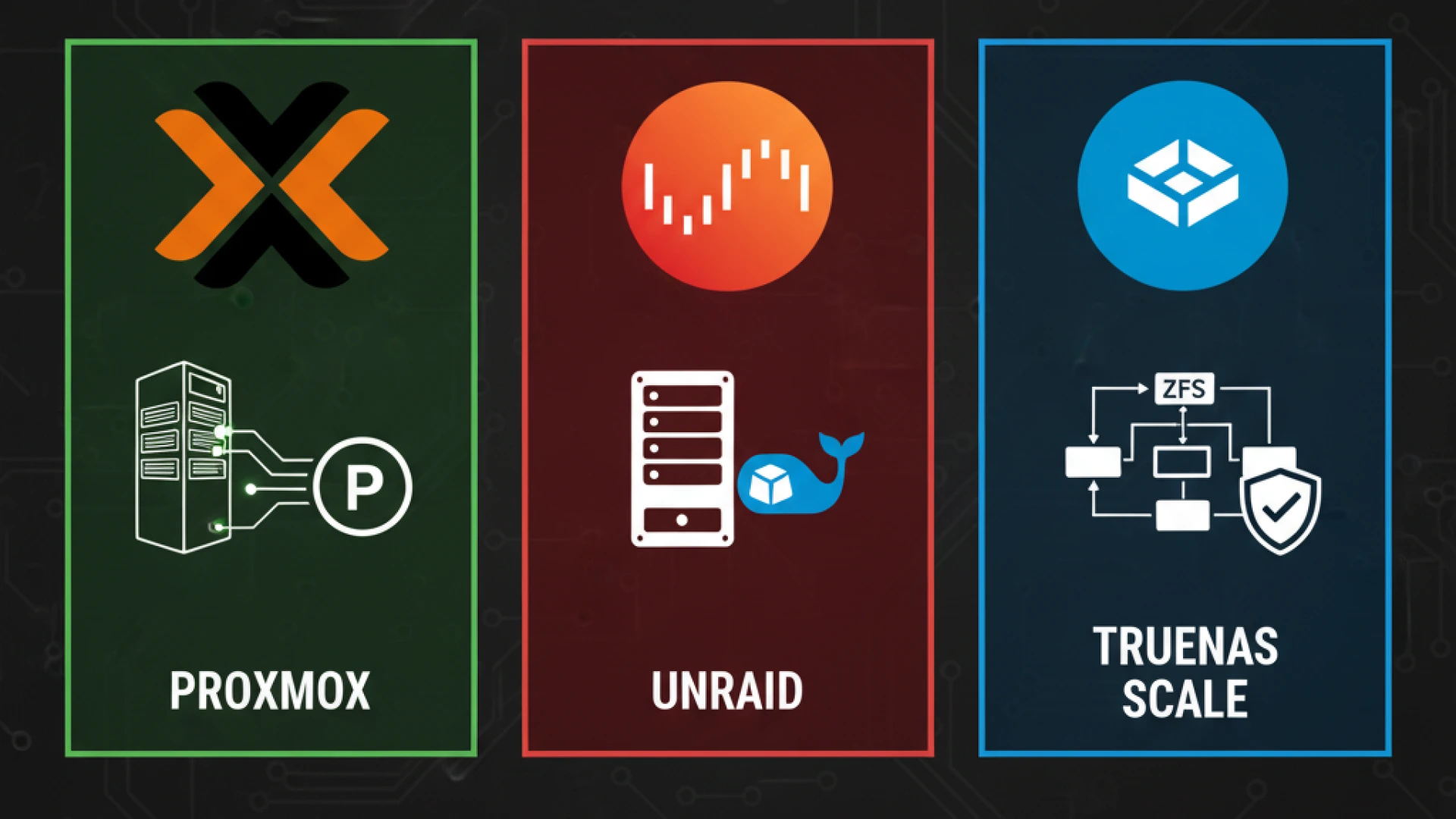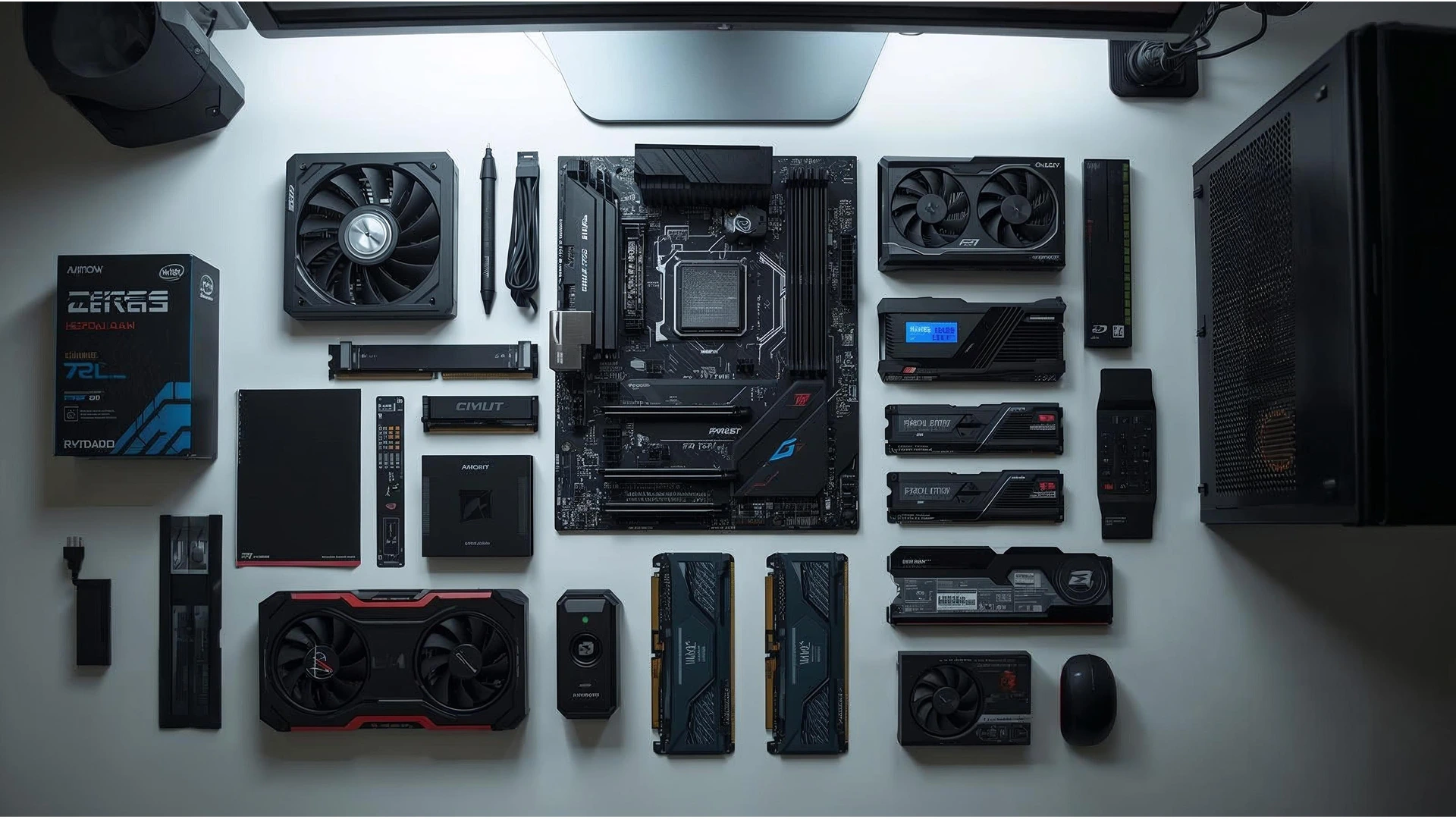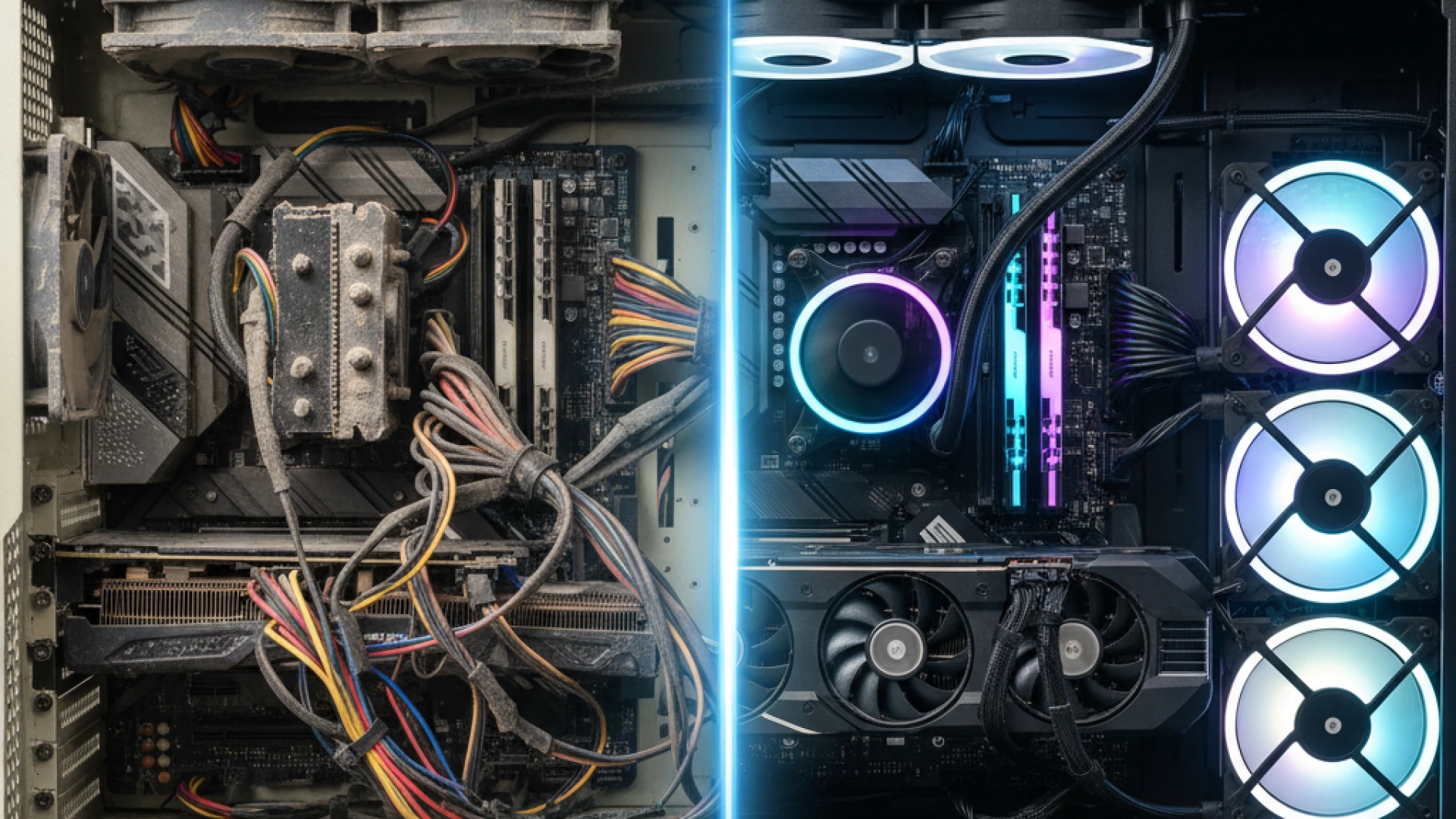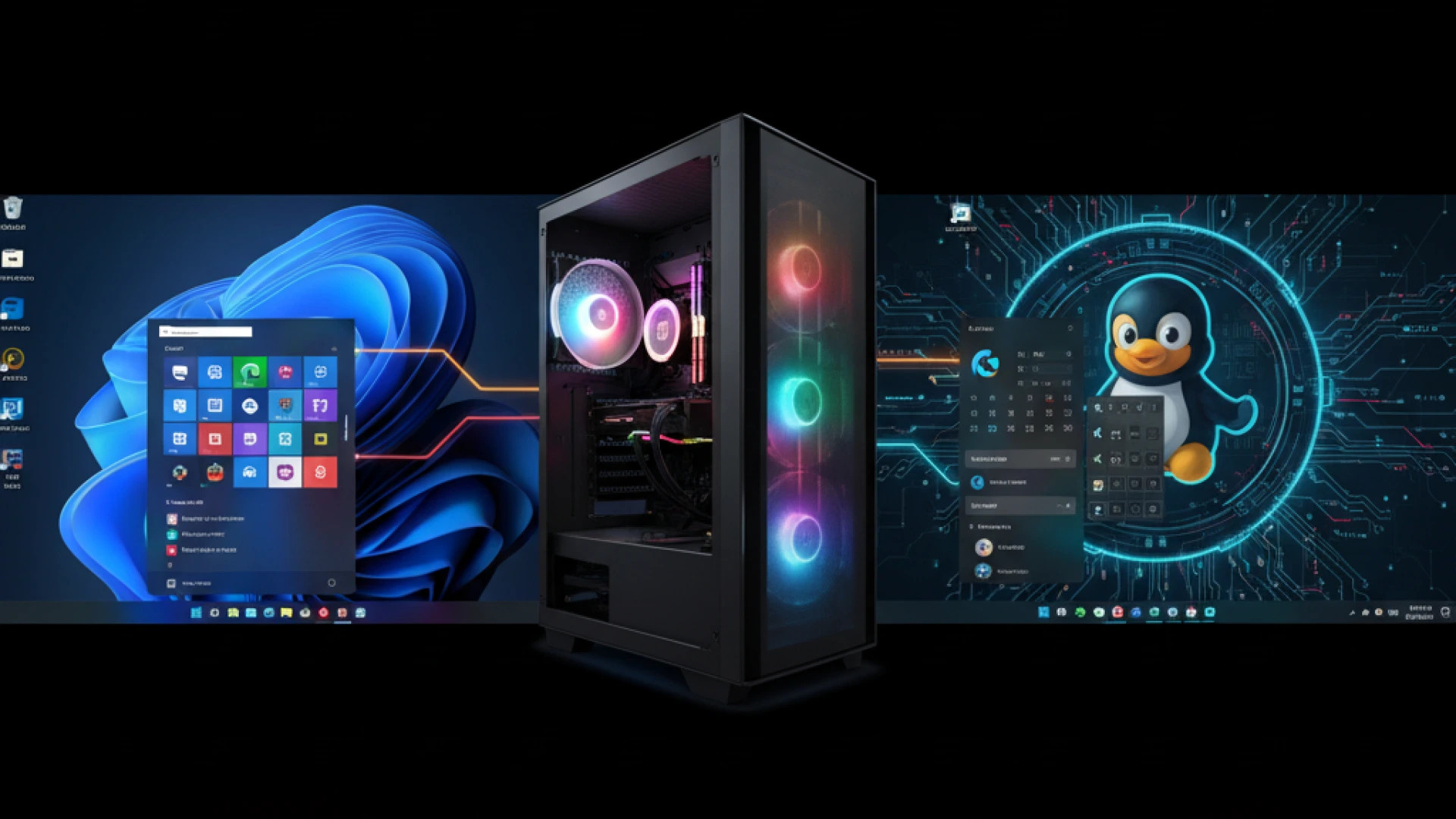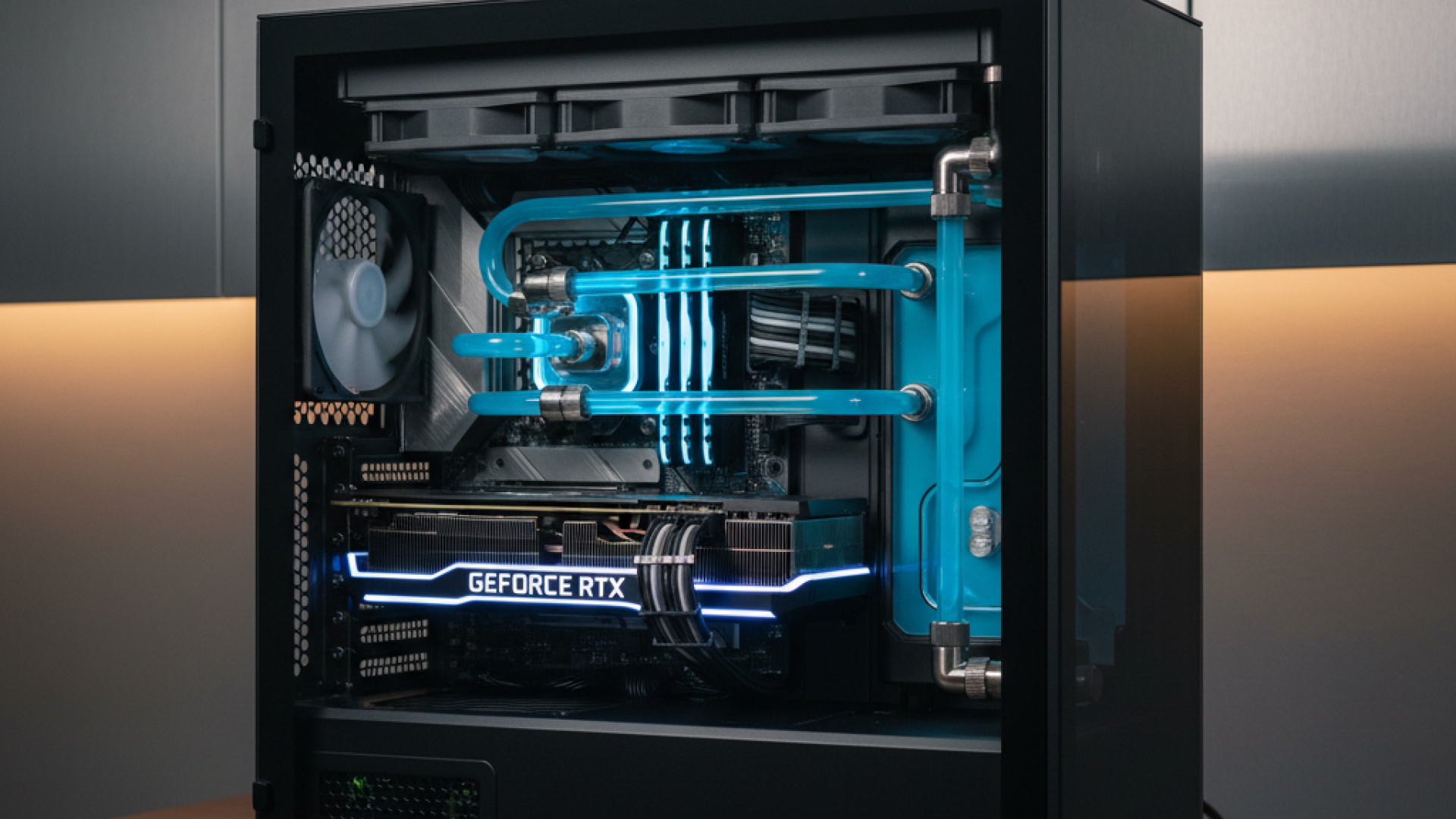Gone are the days when home automation was a luxury for the few. In fact, smart home technology now costs 60% less than it did in 2020, making a connected lifestyle more accessible than ever. This dramatic shift means that building a smart home on a budget in 2025 is not just a possibility; it’s a straightforward and beneficial project.
The benefits of this cheap home automation revolution extend far beyond the initial “wow” factor. This is an investment that pays you back. You’ll unlock significant energy savings with devices that adapt to your life, potentially slashing your annual utility bills by 15-25%. You’ll gain enhanced security with real-time monitoring and instant alerts, offering priceless peace of mind. And you’ll experience unparalleled convenience through voice commands and automated routines that streamline your daily tasks.
This definitive budget smart home guide delivers on a powerful promise: we will show you how to build a comprehensive and powerful smart home system for under $500. There are no omitted features or shortcuts, just a well-thought-out, practical roadmap.
Here’s what you’ll learn in this step-by-step smart home guide on a budget:
- Strategic Planning: How to prioritise your investments for maximum impact and avoid overspending.
- Device Selection: Curated picks for the best affordable smart home devices that rival premium performance.
- Step-by-Step Setup: Easy-to-follow installation guides that require absolutely no technical expertise.
- Integration Strategies: Secrets to making all your devices work together in perfect harmony.
- Money-Saving Tips: Proven methods to find deals, use coupons, and avoid common expensive mistakes.
Let’s begin your journey to a smarter home.
Why Build a Smart Home on a Budget in 2025?
Thinking of smart home technology as a frivolous expense is a mindset of the past. In 2025, the financial argument is undeniable. Modern smart devices are practical investments that deliver a significant and measurable smart home ROI 2025, transforming your living space while actively putting money back in your pocket.
The Immediate Payoff: Slash Your Utility Bills
The most direct cost-saving smart home benefits come from reduced energy consumption. The data is compelling:
- Smart Thermostats: These devices are ROI powerhouses. The biggest part of your energy expenditure, heating and cooling, can be reduced by an average of $180 annually with a smart thermostat that learns your schedule and optimises climate control.
- Smart Plugs & Bulbs: Tackle the massive drain of power electronics that consume even when off. Using energy-saving smart devices like smart plugs to control these gadgets can save an additional $50+ annually.
These savings mean your initial setup can often pay for itself within two years.
Unlock Hidden Discounts and Rebates
Your investment is further offset by incentives from insurance providers and utility companies.
- Insurance Premium Reductions: Enhance your home’s safety profile, and many insurers will reward you. It’s common for providers to offer smart home insurance discounts of 5-15% for installing certified monitored security systems, leak sensors, and smart smoke detectors.
- Direct Rebates on Gear: Don’t overlook smart thermostat rebates that utility companies frequently promote. Most regional energy providers offer instant or mail-in rebates ranging from $50 to $150 simply for purchasing and installing an eligible model, effectively lowering your upfront cost.
Boost Your Home’s Resale Value
The financial benefits extend to your home’s long-term value. Real estate studies consistently show that homes with integrated, popular smart technology can sell for approximately 3% more than comparable non-smart homes. For a $300,000 property, that’s a potential $9,000 increase in value, a return that massively outweighs the cost of a budget-conscious system.
Debunking the “Luxury Only” Myth
The idea that smart homes are exclusively for the wealthy is completely outdated. The market has undergone a dramatic transformation, with major tech companies now competing fiercely in the budget segment. Today’s most affordable devices deliver the core functionality that matters most: rock-solid reliability, seamless automation, and comprehensive remote access, providing 90% of premium benefits at 30% of the cost.
Consider this: a basic smart home starter kit that would have cost $2,000 five years ago now retails for under $300. Generic smart plugs perform identically to name-brand versions that cost three times more. Budget security cameras offer 1080p recording, night vision, and smartphone alerts for less than a single month of traditional monitoring service.
With strategic planning, seasonal sales hunting, and the growing availability of utility rebates, building a cost-saving smart home has become one of the most accessible and intelligent upgrades any modern homeowner can make, regardless of income level.
Planning Your Budget Smart Home Strategy
The difference between a collection of gadgets and a truly helpful smart home is a solid plan. A successful smart home planning guide starts with a clear vision, preventing you from buying incompatible devices or overspending on features you don’t need. This budget smart home roadmap is designed to transform your smart home goals 2025 into a reality through a logical, affordable home automation steps approach.
Step 1: Define Your ‘Why’
Before you buy a single device, identify your primary motivation. Your entire strategy will flow from this decision. Are you driven by:
- Security: Protecting your family and property with monitoring and alerts?
- Convenience: Simplifying daily routines with automation and voice control?
- Energy Savings: Reducing utility bills through intelligent climate and lighting control?
Choosing a focus ensures every dollar you spend contributes directly to your desired lifestyle improvement.
Step 2: The Phased Implementation Roadmap
Trying to do everything at once is the fastest way to blow your budget. This phased approach ensures a stable, integrated system that grows with you.
- Phase 1: The Foundation (Months 1-3 | Budget: < $250)
Focus on high-impact, high-ROI devices. This includes a smart thermostat to start saving immediately, a smart doorbell or camera for security, and a few smart plugs to eliminate energy drain. This core setup delivers tangible benefits from day one. - Phase 2: Expansion & Convenience (Months 4-6 | Budget: < $150)
Build on your foundation by adding smart lighting (switches for entire rooms are more cost-effective than individual bulbs) and more smart plugs. This phase enhances daily convenience and further optimises energy usage. - Phase 3: Optimisation & Advanced Automation (Months 7+)
Now that your system is mature, use accumulated energy savings to fund upgrades. Add specialised sensors (motion, humidity), more robust security devices, or entertainment integrations to create sophisticated conditional routines.
Step 3: Strategic Budget Allocation
For an initial $500 investment, we recommend this strategic allocation to maximise impact and savings:
- 40% Security ($200): Smart doorbell, sensors, and monitoring
- 30% Climate Control ($150): Smart thermostat and sensors
- 20% Lighting ($100): Smart switches/plugs for key areas
- 10% Hub/Entertainment ($50): A central voice assistant or hub
ROI Timeline: When Your Investments Pay for Themselves
This table illustrates how your smart home starts funding its own expansion.
| Device Category | Initial Cost | Annual Savings/Benefit | Payback Period |
|---|---|---|---|
| Smart Thermostat | ~$120 | ~$180 (Energy) | 8 months |
| Smart Plugs (4-pack) | ~$40 | ~$50 (Energy) | 10 months |
| Security System | ~$180 | ~$90 (Insurance Discount) | 24 months |
| LED Smart Bulbs | ~$60 | ~$30 (Energy) | 24 months |
Managing Expectations: A $500 system is a powerful starting point that delivers core functionality and measurable savings. This pragmatic, affordable home automation steps approach ensures every dollar works toward building a smarter home, not just a more expensive one.
Choosing the Right Budget Smart Home Ecosystem
Selecting your smart home’s central brain is your most crucial decision. Your choice of a budget smart home hub dictates every device you can add later, impacting both your upfront costs and long-term flexibility. A wrong turn can lead to expensive proprietary gadgets and a dead-end system. This budget smart home hub comparison will break down the real costs of the major platforms to help you build an affordable smart home ecosystem.
Ecosystem Cost Breakdown: The Starter Kit Investment
The initial investment for a basic starter kit reveals each platform’s philosophy and target audience.
- Amazon Alexa: The Budget Powerhouse (~$150 Starter Kit)
An Echo Dot (often on sale) paired with a two-pack of smart plugs forms a robust and affordable smart home ecosystem. The core of Alexa’s value is its vast compatibility with thousands of cheap smart speakers 2025 and ultra-low-cost devices from third-party manufacturers, often making it 30-50% cheaper to build out than other ecosystems. - Google Home: The Intelligent Assistant (~$130 Starter Kit)
The Google Nest Mini and a smart plug offer a competitive entry point. In the Alexa vs Google Home cost debate, Google is often slightly cheaper upfront. Its strength lies in superior voice recognition and AI, making interactions more natural. However, the ecosystem of compatible budget devices, while growing, is not as extensive as Alexa’s. - Apple HomeKit: The Premium Experience ($300+ Starter Kit)
Apple’s system requires a HomePod Mini, which is often more expensive, and other certified accessories. The Alexa vs Google Home cost comparison leaves Apple out entirely, as its premium pricing and strict certification processes place it in a different category. HomeKit is best suited for users who are already deeply invested in the Apple ecosystem and prioritise privacy above all else.
The Matter Protocol: Your Critical Future-Proofing Standard
For any budget smart home hub decision in 2025, the Matter protocol is your most important consideration. This new, universal standard ensures devices work seamlessly across all major platforms (Alexa, Google, Apple) simultaneously.
When building your system, prioritize Matter-certified devices. This is the ultimate form of future-proofing. It means a smart plug you buy for your Alexa system today will still work perfectly if you decide to switch to Google Home five years from now. This protects your investment and eliminates the fear of ecosystem lock-in, making it the smartest strategy for a budget-conscious builder.
Recommendation: Alexa Wins on Pure Budget Value
For the best combination of low entry cost, massive device selection, and deep discounts, Amazon Alexa is the overall budget winner. Its open approach results in the widest availability of cheap smart speakers 2025 and budget-friendly devices.
Google Home is a very close second, perfect for those who value a more intelligent assistant and are already using Android phones and Google services.
Ecosystem Compatibility Matrix
This visual guide shows which platform offers the best native support for key budget device categories.
| Device Type | Alexa Support | Google Support | HomeKit Support | Matter Support |
|---|---|---|---|---|
| Budget Smart Plugs | Excellent | Excellent | Good | Excellent |
| Smart Bulbs | Excellent | Excellent | Good | Excellent |
| Thermostats | Excellent | Good | Limited | Excellent |
| Sensors | Excellent | Good | Fair | Growing |
| Video Doorbells | Excellent | Good | Fair | Limited |
Final Word: Your choice should align with your current devices and priorities. However, by choosing a Matter-enabled budget smart home hub like an Echo Dot or Nest Mini and buying Matter devices, you ensure your affordable smart home ecosystem remains flexible and valuable for years to come.
Essential Budget-Friendly Smart Home Devices by Category
Building a comprehensive smart home no longer requires a premium budget. The market is now flooded with high-quality, affordable smart home devices that deliver exceptional performance and reliability. This section breaks down the best options across every major category, complete with comparison tables and strategic buying advice to ensure you get maximum value for every dollar spent, proving that a DIY security system cost is manageable for anyone.
Smart Security Systems on a Budget
A robust DIY security system is now within everyone’s reach. Modern systems offer professional-grade monitoring and integration without the hefty price tag or long-term contracts, making enhanced security both accessible and affordable.
Cheap Home Security Cameras (<$50)
The best cheap home security cameras offer stunning features like HD video, night vision, and motion detection. When building your budget home security setup, these are the top contenders that balance cost and features perfectly.
| Camera Model | Price | Key Features | Best For |
|---|---|---|---|
| Wyze Cam v3 | ~$36 | Compact design, Alexa integration, and included Sync Module | Outdoor/Indoor monitoring |
| Blink Mini | ~$35 | Compact design, Alexa integration, included Sync Module | Indoor placement |
| Tapo C200 | ~$25 | Pan/tilt functionality, two-way audio, microSD slot | Pet/baby monitoring |
Budget Video Doorbell (<$100)
A budget video doorbell is your first line of defence. The key is to balance video quality, storage options, and smart home integration.
- eufy Battery-Powered Doorbell ($80-$100): Offers local storage without mandatory monthly fees, providing crisp 2K resolution and reliable person detection.
- Ring Video Doorbell Wired ($65): A budget-friendly option that integrates seamlessly with Alexa and existing doorbell wiring.
- Reolink WiFi Video Doorbell ($90): Touts superior 2K resolution and colour night vision, often praised for its clear image quality.
Affordable Smart Locks (<$150)
Affordable smart locks provide keyless entry and remote access, a cornerstone of modern home security.
- August Wi-Fi Smart Lock ($130): A popular retrofit model that works with your existing deadbolt and keys.
- Wyze Lock ($90): An incredible value, offering a keypad, automatic locking, and smartphone control.
- Yale Assure Lock SL ($149): Provides a sleek, key-free touchscreen keypad and is often certified for home security monitoring services discounts.
Professional Monitoring & Strategy
Skip the $40+ monthly traditional home security monitoring services. DIY options like SimpliSafe or Ring Alarm provide certified professional monitoring at a fraction of the cost. Many insurers offer the same premium reductions for these certified DIY systems.
- Bulk Sensor Buying: Maximise your budget by purchasing door/window contact and motion sensors in multi-packs. Generic Zigbee or Z-Wave sensors can cost as little as $8-12 each in bulk.
Smart Climate Control for Energy Savings
Smart climate devices offer the fastest return on investment through significant energy savings, often accelerated by utility company rebates. This is where smart HVAC controls shine.
Budget Smart Thermostat Installation
The cheap programmable thermostat market is dominated by two excellent, ENERGY STAR-certified options. A budget smart thermostat is a cornerstone of any energy-efficient home.
| Thermostat | Price | Key Features | Estimated Annual Savings | Rebate Eligible |
|---|---|---|---|---|
| Amazon Smart Thermostat | $60 | Simple app control, Alexa built-in, easy DIY install | $180 | Yes |
| Ecobee Essential | $99 | Room sensor support, superior scheduling algorithms | $185 | Yes |
Smart Thermostat Rebates from Utility Companies
This is your secret weapon. Before you buy, contact your utility company. Most offer $50-150 smart thermostat rebates from utility companies for installing an ENERGY STAR-certified model, effectively making your upgrade free. Keep your receipt and installation documentation to claim the rebate.
Energy Monitoring Devices
Energy monitoring devices like smart plugs with power monitoring ($15-20) are invaluable diagnostic tools. They identify energy drains from electronics on standby and pinpoint inefficient appliances, providing concrete data to guide your energy-saving efforts.
Smart Plugs for HVAC
Use smart HVAC controls like smart plugs to manage space heaters, window AC units, and fans. This allows you to automate and control these devices remotely, integrating them into your whole-home efficiency system.
Smart Lighting Solutions
Smart lighting provides instant ambience and convenience. Today’s cheap smart bulbs 2025 and affordable smart switches are incredibly reliable and form the backbone of budget LED smart lights.
Cheap Smart Bulbs 2025 (<$15/Bulb)
- Wyze Colour Bulbs ($12): Deliver 16 million colours, high brightness (1100 lumens), and excellent app control.
- Sengled Element bulbs ($8): The king of reliability for simple warm-to-cool white dimming.
- Kasa Smart Bulbs ($10): Offer seamless integration with TP-Link’s ecosystem and a robust, user-friendly app.
The Bulbs vs. Smart Switches ROI Debate
This is a critical strategic decision for your affordable smart switches plan:
- Smart Bulbs: Best for lamps, accent lighting, and colour effects.
- Smart Switches ($20-25): The permanent, long-term solution for overhead lighting. They work with any standard bulb and control an entire fixture at once. For rooms with multiple bulbs, smart switches offer a far better return on investment.
Budget Smart Switches (<$25)
- Kasa Smart WiFi Switch ($15): A best-in-class option that requires no hub.
- Treatlife Smart Dimmer Switch ($18): Adds dimming capability to your existing dumb bulbs at a fantastic price point.
Color-Changing Options
For colour-changing options, look beyond Philips Hue. Brands like Govee and Wyze offer vibrant, reliable, cheap smart bulbs in 2025 with full colour spectrum control for a fraction of the cost.
Smart Speakers and Voice Control
Your budget smart speakers are the voice-activated heart of your smart home, making them one of your most important purchases. An affordable smart display can further enhance control.
Echo Dot (5th Gen) vs. Nest Mini (2nd Gen)
The battle of the cheap voice assistants is fierce. Both are excellent budget smart speakers.
| Feature | Echo Dot 5th Gen ($50) | Nest Mini 2nd Gen ($49) |
|---|---|---|
| Sound Quality | Improved bass, clearer highs | Balanced, room-filling sound |
| Voice Recognition | Excellent | Superior natural language |
| Smart Home Control | 100,000+ compatible devices | 50,000+ compatible devices |
Smart Displays Under $100
For a visual interface, affordable smart displays are game-changers.
- Echo Show 5 ($85): Provides a compact screen for video calls and security camera live feeds.
- Nest Hub ($90): Offers superior integration with Google services and functions as a brilliant digital photo frame.
Smart Plugs and Power Management
Smart plug deals offer the easiest and most cost-effective entry into home automation, requiring zero installation. They are the ultimate energy-saving plugs.
Smart Plugs Under $10/Unit
- Kasa Smart Plug 4-pack ($28): Often on sale, these are renowned for their reliability.
- Amazon Smart Plug ($25 for 2-pack): Designed for sheer simplicity and seamless Alexa integration.
- Wyze Smart Plug ($6 on sale): Unbeatable for basic on/off scheduling and control.
The Value of Power Monitoring Plugs
Power monitoring devices are a subtype of smart plug that provide invaluable data. They identify your biggest energy drains and provide the data needed to achieve real savings, making them true energy-saving plugs.
Multi-Outlet Smart Power Strips
For entertainment centres, a smart power strip is more cost-effective than buying individual plugs. It controls multiple outlets independently, provides surge protection, and manages cable clutter, representing the best smart plug deals for multi-device control.
Smart Home Installation: DIY vs Professional Costs
The installation method you choose can dramatically impact your project’s total expense. While professional installation guarantees expertise, DIY smart home installation empowers you to avoid installation fees, saving hundreds or even thousands of dollars without compromising on functionality or performance.
Complete Cost Comparison: DIY vs. Pro
The financial difference is stark. The table below illustrates the total smart home setup cost for a typical $500 equipment package.
| Installation Type | Equipment Cost | Labor Cost | Total Investment |
|---|---|---|---|
| DIY Installation | $500 | $0 | $500 |
| Professional Installation | $500 | $500 – $2,000+ | $1,000 – $2,500+ |
Professional Installation Cost Breakdown
The smart home professional installation cost is rarely trivial. It varies by region and project complexity, but typically includes:
- Smart Thermostat: $150 – $300 (for 30-60 minutes of work)
- Complete Security System: $200 – $500 (for 2-4 hours of work)
- Smart Switches: $75 – $150 each (for 15-30 minutes per switch)
- Whole-Home Setup: $1,500 – $3,000 (for a full day’s work)
These figures show that labour can easily surpass the cost of the devices themselves, making the case to self-install smart devices incredibly compelling for budget-minded homeowners.
Essential DIY Toolkit (Under $50 Investment)
You can avoid installation fees with a minimal investment in a few essential tools, most of which are reusable for future projects.
- Non-Contact Voltage Tester ($15): The most critical tool for ensuring electrical safety before you begin work.
- Wire Strippers ($10): Necessary for preparing wires for thermostats and switches.
- Drill with Bits ($20): For mounting cameras, sensors, and brackets.
- Wire Nuts & Screwdriver Set ($5): For securing electrical connections and general assembly.
Step-by-Step Installation Confidence
Modern devices are designed for ease of use. A successful DIY smart home installation is well within the capabilities of the average person. Most products come with detailed guides, and manufacturers often provide extensive online video tutorials. The general process for common devices is straightforward:
- Smart Thermostats: Turn off power, photograph your existing wiring, and connect the labelled wires to the new unit.
- Video Doorbells: Remove your old doorbell, connect two low-voltage wires, and mount the new unit.
- Smart Switches: Turn off power at the breaker, remove the old switch, and connect wires to the matching terminals on the new switch.
With proper preparation, the average device takes between fifteen to forty-five (15-45) minutes to install.
When to Call a Professional
Safety must always come first. It is wise to contact a licensed electrician for:
- Homes without existing doorbell wiring.
- Electrical panels that require new circuits.
- Complex multi-zone HVAC systems.
- Any situation where you feel uncertain or uncomfortable working with electrical wiring.
WiFi Network Optimisation: The Hidden Pre-Installation Step
Before installing any device, ensure your WiFi network is robust. Weak signals are a primary cause of connectivity issues that professionals charge $100+ to diagnose. Use a smartphone app to check signal strength in all installation areas and consider a mesh network system ($50-100) to eliminate dead zones.
Warranty Considerations
A major benefit of the DIY smart home installation approach is that it maintains full manufacturer warranties when devices are installed according to the provided instructions. While smart home professional installation costs might include a labour warranty from the installer, it rarely justifies the 200-400% premium. Always document your install with photos and keep the original packaging to streamline any potential warranty claims.
Ultimately, the savings from choosing to self-install smart devices can be directly reinvested into your system, allowing you to build a more comprehensive and powerful smart home for the same total budget.
Smart Home Deals: The Ultimate Buying Guide
Building a smart home on a budget is as much about when and where you buy as it is about what you buy. Strategic shopping can slash your total investment by 30-50%. This guide reveals the secrets to finding the best prices, from monumental sales events to trusted discount marketplaces.
The Evergreen Buying Strategy: Timing is Everything
Knowing the annual sales cycle is the key to unlocking massive savings. Plan your purchases around these predictable events to maximise your budget.
- Smart Home Black Friday Deals: This is the undisputed champion of sales. Expect 40% discounts on major brands like Ring, Google Nest, and Ecobee. This is the best time to buy high-ticket items like smart displays and security systems.
- Amazon Prime Day (July): Perfect for scoring 30% off Amazon-branded devices (Echo, Blink, Ring) and exclusive bundle deals that aren’t available at other times of the year.
- Cyber Monday: While Black Friday focuses on big brands, Cyber Monday is ideal for finding competitive discounts on lesser-known brands and accessories.
- End-of-Season Sales (March/September): Manufacturers clear out old inventory to make way for new models, making this a prime time to find discontinued items at a steep discount.
Where to Buy Cheap Smart Devices: New and Refurbished
Beyond timing, your choice of retailer matters.
- The Refurbished Market: Don’t overlook refurbished smart home devices. Official manufacturer stores on Amazon and eBay offer certified refurbished products that have been tested, repaired, and come with a full warranty, often at 20-40% off the original price. This is an excellent option for mechanical devices like smart locks and cameras.
- Global Marketplaces: For ultra-budget components like sensors and generic smart plugs, global marketplaces like AliExpress can be a source for significant savings. However, prioritise sellers with high ratings and be mindful of longer shipping times and potential compatibility checks (e.g., ensuring plugs have the correct regional prongs).
Mastering Price Tracking and Discount Codes
Avoid impulse buys and fake “sales” by using intelligence tools.
- Price Tracking Tools: Use free browser extensions like CamelCamelCamel (for Amazon) and Keepa to view historical price data. Set alerts for your desired price point so you’re notified the moment a genuine drop occurs.
- Smart Home Discount Codes: Always search for smart home discount codes at checkout. Browser extensions like Honey can automatically apply available codes, and subscribing to brand newsletters often grants an immediate 10-15% off your first order.
Pro Strategies for Maximum Savings
- Bulk Buying: Purchase sensors, bulbs, and plugs in multi-packs. You can often achieve 30-50% savings per unit compared to buying each item individually.
- Credit Card Rewards: Use a cashback credit card for all your tech purchases. Many cards offer 5% back on rotating categories like Amazon or electronics stores, or a flat 2% back on all purchases, effectively giving you an automatic discount.
- Follow and Subscribe: Follow your favourite smart home brands on social media and subscribe to retailer newsletters. This is often the fastest way to get early access to sales and receive exclusive, member-only smart home discount codes.
Pro Tip: Bookmark the “Special Offers” or “Deals” page on the websites of retailers like Amazon, Best Buy, Aliexpress, and Newegg. They frequently feature a “Smart Home” section with updated promotions, allowing you to find active deals without a single dedicated page.
Smart Home Automation Routines for Maximum Savings
While convenience is a major draw, the true power of a smart home lies in its ability to automate savings. The right smart home automation ideas can systematically eliminate energy waste, consistently performing optimisations that are easy for humans to forget. A well-configured system of energy-saving routines can reduce your monthly utility bills by $70 or more without compromising your comfort.
High-Impact Energy Saving Routines
The following automations form the core of any efficient budget automation setup, delivering significant returns with minimal effort.
- “Goodnight” Routine (Estimated Monthly Savings: $15)
A single voice command or scheduled time triggers a cascade of savings: it locks all doors, turns off every light, adjusts the thermostat to an energy-efficient sleep temperature (68°F in winter, 78°F in summer), and cuts power to entertainment systems via smart plugs. This routine targets the most common sources of overnight energy waste. - “Away Mode” Routine (Estimated Monthly Savings: $25)
Triggered by your smartphone leaving a designated geographic area (geofencing) or a manual command, this mode is a powerhouse for savings. It adjusts the thermostat by 5-8 degrees, turns off all non-essential smart plugs to combat phantom load, activates security cameras, and cycles lights to simulate occupancy. The combined reduction in HVAC and “vampire” energy usage delivers substantial financial returns. - “Energy Saver” Routine (Estimated Monthly Savings: $30)
For those on time-of-use utility plans, this is essential. During peak rate hours (typically 3-7 PM), this routine automatically reduces HVAC demand, delays the operation of washers and dryers, and dims lights by 25%. This strategic avoidance of high-cost energy periods provides the maximum financial impact.
Advanced Free Automation Platforms
You don’t need a paid subscription to create sophisticated automations.
- IFTTT Smart Home Integration
The IFTTT smart home platform (If This, Then That) is a game-changer for automating budget setups. It creates “applets” that connect devices across different ecosystems for free. Examples include: “If the outdoor temperature exceeds 85°F, then turn on the smart plug for my fan”, or “If my security camera detects motion, then turn on the porch light.” - Native Platform Routines
Don’t underestimate the built-in power of Google Routines and Alexa Routines. These tools enable you to create voice-activated commands, such as “Hey Google, I’m leaving,” that trigger a complex series of energy-saving actions across all your compatible devices instantly and reliably.
Seasonal Optimisation and ROI Tracking
To maintain peak efficiency, your routines should evolve with the seasons. Summer routines should prioritise cooling and peak-hour reduction, while winter routines should focus on heating optimisation and compensating for shorter daylight hours.
Finally, it’s crucial to track your success. Use energy-monitoring smart plugs to measure consumption before and after implementing these energy-saving routines. By establishing a one-month baseline and then comparing it to your post-automation bills, you can concretely measure your return on investment. Most households achieve a 15-25% reduction in energy consumption within 60 days of implementing a comprehensive automation strategy.
Troubleshooting Common Budget Smart Home Issues
Even the most carefully planned smart home can encounter hiccups. A proactive approach to diagnosing smart home problem solutions will save you time, money, and frustration. Most issues are software or network-related and can be resolved with simple fixes, making a reliable smart home troubleshooting guide your most valuable tool.
Network Performance Issues
The vast majority of WiFi issues smart devices face are related to network congestion or weak signals, not faulty equipment.
- WiFi Overload Solutions: A basic router can be overwhelmed by 20+ connected devices. The most effective upgrade is to a dual-band router ($50-80), which allows you to dedicate the 2.4GHz band to your IoT devices while reserving the faster 5GHz band for streaming and computers. For larger homes (over 1,500 sq. ft.), a mesh network system ($100-150) is the definitive solution for eliminating dead zones and ensuring stable connectivity.
- Router Optimisation: Use a free app like WiFi Analyser to identify the least congested channel for your 2.4GHz network (typically channels 1, 6, or 11). Additionally, enable Quality of Service (QoS) settings in your router’s admin panel to prioritise traffic for your smart home devices during peak usage hours.
Device Connectivity Problems
When a specific device acts up, a methodical approach is key.
- Classic Troubleshooting: The first step for most smart home problem solutions is the classic power cycle: unplug the device for 30 seconds and then plug it back in. This clears temporary memory conflicts and resolves a surprising number of issues. Always check the device’s app for firmware updates before assuming a hardware failure. A factory reset should be a last resort, as it wipes all your settings.
- Range Extender Solutions: For devices struggling with a weak signal, a budget WiFi extender ($25-45) can effectively double your network’s coverage. Place the extender halfway between your router and the problematic device, ensuring it’s away from interference from microwaves or cordless phones.
Voice Assistant Issues
Improving voice recognition accuracy enhances the entire experience.
- Accuracy Improvement Tips: Position your smart speakers at least three feet from walls and other large objects to minimise sound reflection and echo. Complete the voice training feature in your assistant’s app to significantly improve its ability to recognise your specific voice. Speak in a normal, conversational tone rather than shouting, which can distort your command.
- Multi-Device Conflicts: If multiple devices (e.g., several Echo Dots) respond to a single command, you can adjust the sensitivity settings for each device in the app or physically separate them by at least 15 feet to prevent them from “hearing” each other.
Solving Compatibility Problems
Compatibility problems are common when mixing brands, but they are not insurmountable.
- Cross-Ecosystem Workarounds: Use a universal smart home hub that supports Zigbee or Z-Wave ($40-60). These hubs act as translators, allowing devices from different ecosystems to work together seamlessly. Platforms like IFTTT can also create simple “if this, then that” rules to bridge gaps between incompatible services.
Free Community Support and Final Decisions
You are not alone in your troubleshooting journey.
- Free Community Support: Platforms like Reddit (r/smarthome, r/homeautomation) are invaluable resources, offering 24/7 advice from a global community of enthusiasts. Manufacturer forums are also excellent for finding official solutions and announcements for firmware updates.
- When to Return vs. Repair: Perform a quick cost-benefit analysis. For devices under $25, it’s often more time-efficient to return or replace them immediately. For devices between $25-$100, dedicate an hour or two to troubleshooting. For anything over $100, always contact the manufacturer’s support first, as they can often provide guided solutions that resolve the issue.
Future-Proofing Your Budget Smart Home Investment
Building a future proof smart home on a budget requires strategic planning around technology standards that will remain relevant for years to come. Making informed choices today prevents expensive system overhauls tomorrow and protects your investment.
The Matter Protocol is Non-Negotiable
For any purchase in 2025, prioritising Matter protocol devices is the single most important decision you can make. This universal, open-source standard ensures your devices work seamlessly across Amazon Alexa, Google Home, and Apple HomeKit, both now and in the future. Investing in any device without Matter support risks immediate obsolescence as the industry rapidly consolidates around this standard.
The Strategic Upgrade Path
A forward-thinking strategy is key to building a system that grows with you.
- Hub Evolution: Invest in a hub or smart speaker that supports both Matter and Thread. This powerful combination creates a robust, self-healing wireless mesh network that becomes more reliable as you add devices, future-proofing your system against the limitations and congestion of Wi-Fi-only setups.
- Expandable Systems: Start with a core of upgradeable smart devices like a Matter-over-Thread smart plug, a security hub, or a thermostat that support these modern standards. This foundation allows for limitless, worry-free expansion without compatibility concerns.
Avoiding Technology Dead-Ends
Resist the temptation of deeply discounted older-generation devices. A cheap, non-Matter switch may save $10 today, but will likely become a useless brick when manufacturers phase out support for legacy protocols. Current smart home technology trends 2025 clearly point to Matter and Thread as the foundation, making non-compliant devices a poor long-term investment.
Your Investment Protection Checklist
To ensure a 5+ year device lifespan, demand these standards for any new purchase:
- Matter Certified: Guarantees cross-platform compatibility.
- Thread Support: Ensures a scalable, reliable mesh network.
- Wi-Fi 6 Compatible: Provides better network efficiency and handling of multiple devices.
- Automatic Firmware Updates: Essential for ongoing security and feature enhancements.
A Glimpse at Future Smart Home Technology Trends
The innovations on the horizon for 2026-2027 are designed for accessibility. Expect enhanced AI-driven automation that uses your existing sensors more intelligently, improved energy management through utility grid integration, and the simplification of Matter-over-Wi-Fi, which may reduce the need for separate hubs. By investing in compliant devices today, you ensure your budget-friendly system will seamlessly integrate these advances without requiring a complete and costly rebuild.
By focusing on standards compliance over flashy, proprietary features, you build a smart home that is both powerful today and prepared for tomorrow.
Smart Home Budget Calculator and ROI Analysis
Understanding the true financial impact of your smart home requires moving beyond abstract concepts to concrete numbers. This practical framework serves as both a smart home cost calculator and a smart home ROI calculator, empowering you to plan purchases strategically and track the real-world returns on every device you install.
Interactive Budget Planning Tool
A phased approach ensures you build a functional system without overspending. The following smart home cost calculator breaks down a typical budget allocation:
- Phase 1: The Essential Foundation ($200 – $250)
This initial investment covers the highest-impact devices:- Smart Thermostat: $70 – $100
- Security Starter Kit (door/window sensors): $80 – $120
- Smart Plugs (4-pack): $30 – $40
- Basic Hub/Smart Speaker: $50 – $60
- Phase 2: Comfort and Convenience Expansion ($150 – $200)
Build upon your foundation with these additions:- Smart Switches (3-pack): $60 – $80
- Video Doorbell: $60 – $90
- Additional Sensors (motion, leak): $40 – $60
- Phase 3: Advanced Optimisation ($100 – $150)
Fine-tune your system for maximum automation and enjoyment:- Smart Lighting Upgrades (colour bulbs): $50 – $80
- Entertainment Integration (streaming devices): $40 – $70
- Specialised Sensors (humidity, temperature): $30 – $50
Smart Home ROI Calculator Framework
This smart home ROI calculator illustrates how quickly your investments can pay for themselves. The key metric is the smart home payback period.
| Device Category | Initial Cost | Monthly Savings / Benefit | Payback Period |
|---|---|---|---|
| Smart Thermostat | $70 | $15 (Energy) | 5 months |
| Smart Plug Pack (4) | $40 | $8 (Energy) | 5 months |
| Security System | $150 | $20 (Insurance Discount) | 8 months |
| Smart Switches (3) | $75 | $5 (Energy) | 15 months |
| Video Doorbell | $80 | $3 (Energy + Deterrence) | 27 months |
Real-World Examples and Your Energy Savings Calculator
Seeing the math in action proves the value. A $70 smart thermostat saving $15 monthly on your energy bill has a payback period of just five months. A $40 4-pack of smart plugs, which eliminates energy drain for $8 in monthly savings, also pays for itself in five months. Even a $150 security system can pay for itself in eight months through insurance premium reductions alone.
Total System ROI Projection
A complete $500 system typically achieves full payback within 12 to 18 months through combined energy savings, insurance discounts, and utility rebates. This energy savings calculator projection shows that after the initial payback period, conservative households can expect $200 to $400 in annual savings.
Your 5-Year Financial Outlook:
- Year 1: Break-even (device costs are fully recovered)
- Years 2-5: $200 – $400 annual net savings
- Total 5-Year Benefit: $800 – $1,600 net positive
This analysis definitively proves that modern smart home technology is not just a convenience; it is one of the highest-return, budget-friendly improvements available to homeowners today.
Conclusion: Your $500 Smart Home Action Plan
You now possess the complete blueprint to build a powerful, integrated smart home that respects your budget. This final smart home budget summary transforms an overwhelming project into an achievable, step-by-step journey, beginning with the right smart home first steps.
Your 30-Day Quick-Start Affordable Smart Home Checklist
Follow this actionable plan to build momentum and see results within your first month:
- Week 1: Foundation Setup
Choose your ecosystem (Amazon Alexa is recommended for budget-focused builds) and purchase a starter hub or smart speaker during a sale. This is the crucial first step that defines your entire system’s compatibility. - Week 2: High-Impact Installation
Install your first high-ROI device, either a smart thermostat for energy savings or a core security device like a video doorbell. This will deliver immediate, measurable benefits that justify the investment. - Week 3: Automation Introduction
Integrate a 4-pack of smart plugs to eliminate energy drain and create your first automation routine (the “Goodnight” sequence is a perfect start). Experience the convenience that turns scepticism into advocacy. - Week 4: Success Measurement & Review
Review your energy bill, check for insurance discount confirmations, and note time saved through automation. Documenting these initial results provides the data and motivation to confidently plan your Phase 2 expansion.
The Key to Success: Prioritise High-ROI Devices
Adhere to the core principle of this affordable smart home checklist: always start with devices that offer the fastest payback. Prioritise climate control and security over entertaining but less impactful gadgets like colored bulbs. This ensures your system starts saving you money immediately, effectively funding its own growth.
Track Your Success Metrics
Your journey doesn’t end after installation. Continuously monitor your energy bill reductions, confirmed insurance discounts, and the daily time saved through automation. These tangible metrics are the true measure of your system’s value and will intelligently guide your future purchases.
Your Smart Home Journey Begins Now
Remember the mantra: Start small, think big, save consistently. Your first device purchase is the launch of a transformation that pays financial and lifestyle dividends for years to come. The strategic $500 investment outlined in this guide is projected to become $800–$1,600 in net savings over five years.
Your path to a smarter, more efficient home is clear. Take that first step today, choose your ecosystem, and make that initial purchase. Your future self will thank you for it.
